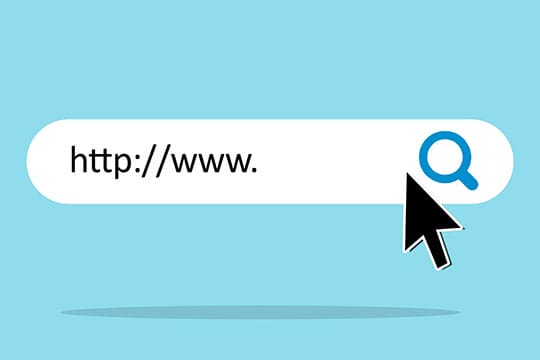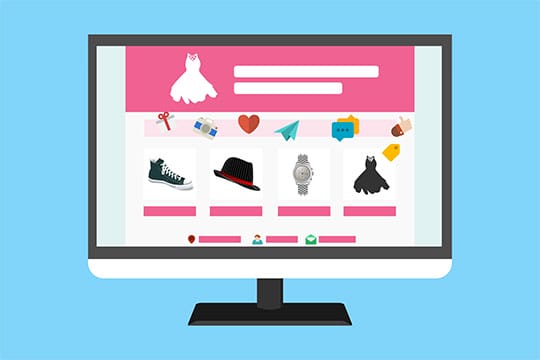Setting up an online startup is a thrilling experience for business owners, isn’t it? For sure it is…!
The business launch is a journey that is exciting and anticipatory for people of all norms, yet it comes with a lot of risks. Making mistakes is a huge taboo in our society especially in the business world because everyone expects you to be perfect. Keep in mind mistakes are a necessary aspect of becoming successful because you always learn from them.
It is commonly said that mistakes don’t stop your working momentum, they are crucial to figuring out a better path, so it is okay to make mistakes. While doing business, make mistakes, learn from them, and still plan them in a better way to avoid huge damages.
Anyone who has carefully planned a business cycle can minimize the risk of setting up an online store, still, there are nerves in the mix. Yes, this is true! While doing online business, there is always a capacity to make mistakes and the mistakes can bring huge risks.
In the ecosystem of e-commerce stores, Shopify is a widely used e-commerce platform that offers a simple, easy, user-friendly, and streamlined business setup to entrepreneurs. Still, there is room to make mistakes. So before preparing to go live, Shopify store owners need to be aware of the pitfalls so that they can avoid all mistakes and make steady progress by leaps and bounds.
Are you a beginner in the world of Shopify e-commerce stores??? Great!!!
You have landed at the right place. In this article, we are going to share some common mistakes and pitfalls that store owners new to Shopify should avoid so that they can have a fresh yet successful kick start.
Mistakes that Shopify store owners make

Here are a few technical and non-technical mistakes that Shopify businessmen find themselves making. Let’s have a look at the common Shopify mistakes & how to sidestep them.
Recommended for you: 10 Benefits of Choosing Shopify for the eCommerce Store.
1. Trying to take shortcuts

Businessmen should be aware of the fact that there are no shortcuts in the business world. An online store needs dedication and consistency to build correctly and successfully.
Don’t look for shortcuts at all rather spend more time and effort to set up the long-term foundations of your online business setup.
2. Undervaluing the power of marketing and branding

Digital marketing and branding are the keys to making an online business a huge success. Creating a brand identity online is very crucial for store owners because this plays a huge role in making an impression that the store owns towards the targeted audience.
While launching a Shopify startup, branding plays an important role to create a brand essence online. While planning for your store, take out time to decide how your brand will be represented visually. The visual representation of your brand should be unique and aesthetically pleasing so that your store can stand out from competitors easily.
Being a store owner, you need to create clear, and long-term impressions on the minds of prospective customers so decide your colors, fonts, logo, and tone of voice accordingly. Shopify offers a wide range of themes so you can mismatch them to design perfect visual impressions of your store. Also, you can choose to customize the brand theme as per your needs. After choosing an aesthetically pleasing theme, you can effectively do branding to create a brand identity online.
Mostly, business owners undervalue the power of branding which eventually results in low traffic statistics, poor customer experience, and a chaotic shopping journey.
Don’t miss out on the marketing and branding end of an online store. In this regard, use online tools which are especially available to build the brand’s look and feel. Make a decent-looking brand ready for launch and then do its branding accordingly.
3. Making business too complicated

A complicated business never achieves the heights of success. Try to simplify your business prospects at every stage so that your targeted audience can understand your work processes in a better way.
This simplicity is achieved by defining your complete business in a few simplified sentences. If you still feel some complications in your description, rethink and simplify as much as possible.
4. Not setting up the primary domain

Setting up a primary domain is also very crucial for online store owners. Before setting the Shopify store live, it is advisable to set the primary domain because this primary domain is going to be displayed on all public-facing pages of the Shopify store. i.e., Instead of a custom domain name, your-store-name.myshopify.com format will be displayed.
Not setting up a primary domain has nothing to do with the user experience and navigation within your store, rather it affects the professionalism that your store portrays.
The professionalism that your store offers is the cream of the crop to develop clients’ trust in your brand. As a new store owner, you need to offer reliable services to clients so setting up a primary domain is a good idea.
In order to update the primary domain, you need to buy a custom domain from Shopify or any other platform and ensure that your URL is following your brand name.
5. Expanding the store with too many products

Selling too many products on your Shopify store initially is one of the biggest mistakes that traders and entrepreneurs make while spreading their business. Adding new products to the store doesn’t always work so it is not a good idea to spreading yourself with thin products. Selling products is as important as branding so don’t indulge in any product error & so stick to your hot selling products.
You may like: 6 Common Myths About Starting A Shopify eCommerce Store.
6. Uploading a privacy policy using a built-in template

Another mistake that Shopify business owners make is using a built-in template for the privacy policy of the store. A privacy policy is a legal document that contains information about the way how store owners are using and handling clients’ data. This privacy policy document is one of the crucial means to build trust and transparency between the customers and store owners.
While uploading a privacy policy, Shopify store owners go for templated solutions to meet the legal requirements regarding data manipulation, but they don’t realize that templates always require customization. Built-in templates require input from the store owners so that the policies should be in accordance with the store.
While using policy templates, edit as per your data handling procedures and upload a fully customized, dynamic, & user-friendly privacy policy. Don’t forget to put clients in control of their data privacy to build a trusted relationship.
7. Not knowing the target audience

Another mistake that business people make is not having a clear analysis of the targeted audience. Doing quality research for the store involves two steps. The first one is product knowledge and the second one is knowing the targeted audience.
When researching a niche always look for an authentic targeted audience so that you can sell your services to people who are actually beneficial for you.
8. Failing to market and promote Shopify stores

When it comes to e-commerce, people keep a keen eye on procedures to launch the store with zeal and zest, but they lack preparation for the work that is needed afterward for the promotion and marketing of the brand.
In the world of e-commerce, it is not the case if you build it as per standards people will come to you, rather the store owners need to have a proper marketing and promotion strategy to start driving organic traffic.
In order to fix this pitfall, start your promotion work in advance of your store launch. Create a strategic business plan and then make a strategy to appeal to customers. Also, keep in mind you are going to build your brand reputation so focus on the promotion of your brand.
9. Carries away in the app store

The biggest mistake that store owners make is that they go crazy in the app store. In the Shopify app store, a wide range of apps with a variety of functionalities are available which is overwhelming for store owners. The Shopify store owners get carried away from them and go for the apps they never end up using.
These unnecessary apps weigh down the store which eventually results in a performance dip. This thing slows down the performance resulting in slower load times which ultimately decreases the conversion rate.
To fix this issue, only go for the apps which are capable of adding tangible benefits to your store. As you slowly grow, focus to add up functionality to essential core components.
10. Using low-quality images

Another mistake that Shopify store owners make is using low-quality images to showcase their products. Always use good quality and high-quality images to brand your products so that you can customers can have a clear idea of whether the product is meeting their expectations or not.
You may also like: Magento vs Shopify vs WooCommerce: The E-Commerce Battle.
Final words

The potential of setting up an online store is endless. It is such a beneficial and exciting venture, yet risks are always involved. It is better to be aware of the potential risks so that you can minimize the chances of your new store taking off. Be wise and planned from the beginning of your business journey to be successful. Good luck :-)
This article is written by Shaeel Ahmed. Shaeel is working as a content writer in ClickySoft, a leading Shopify app development company. Being a tech geek, he writes with an aim to help people to understand technology in a better way. Also, he knows about the nook and crook of e-commerce, so he writes passionately to help out business people with his experiences.




